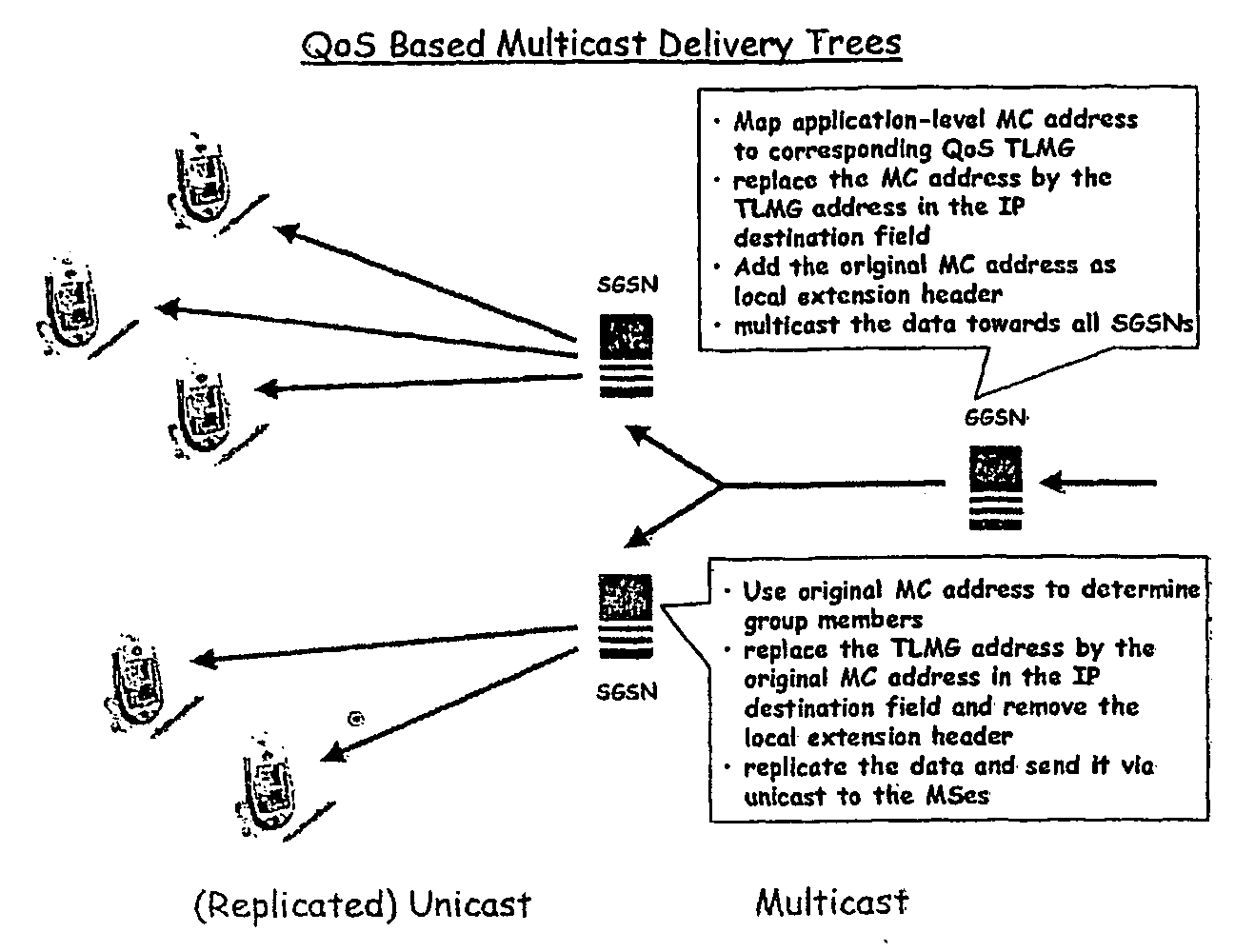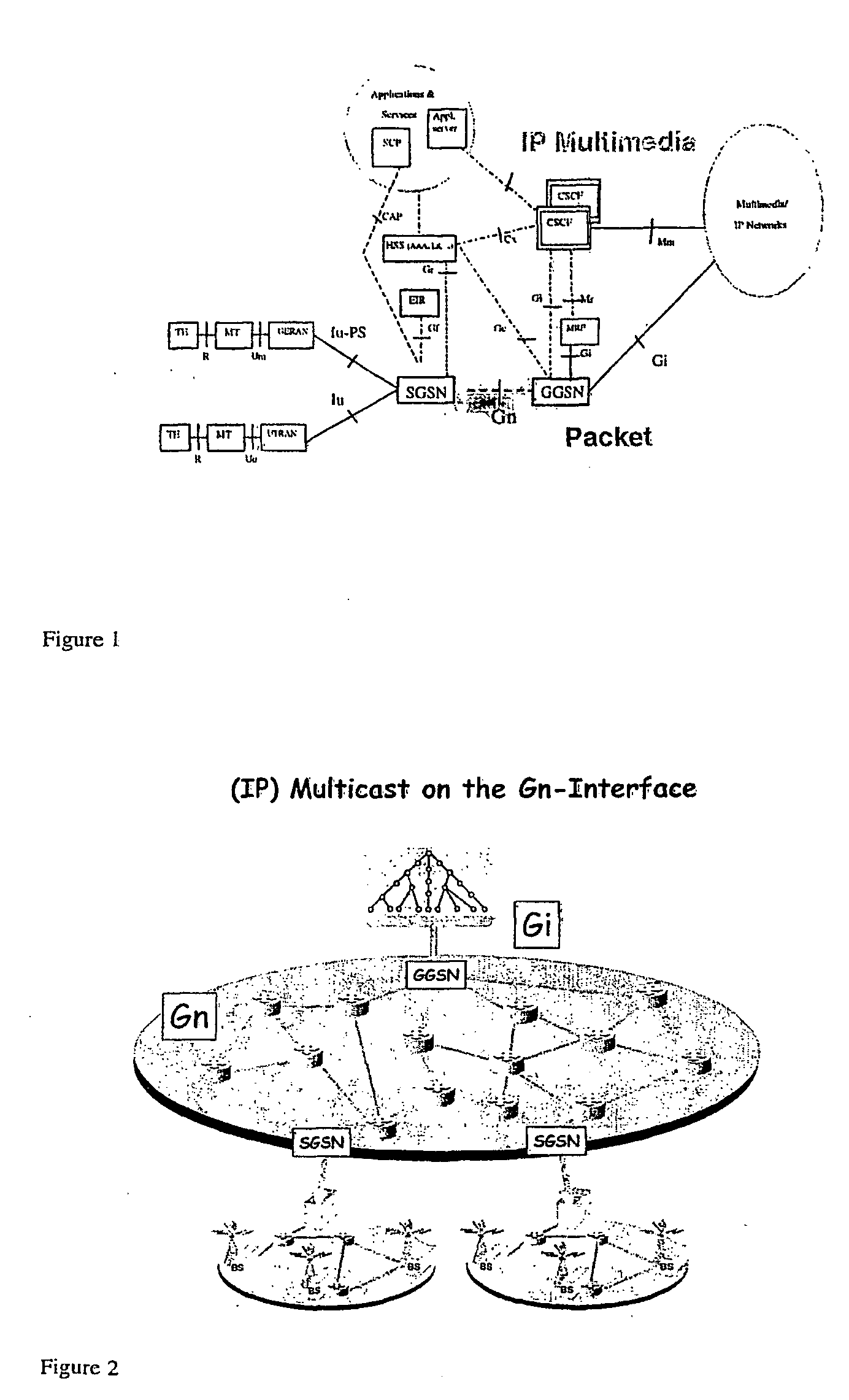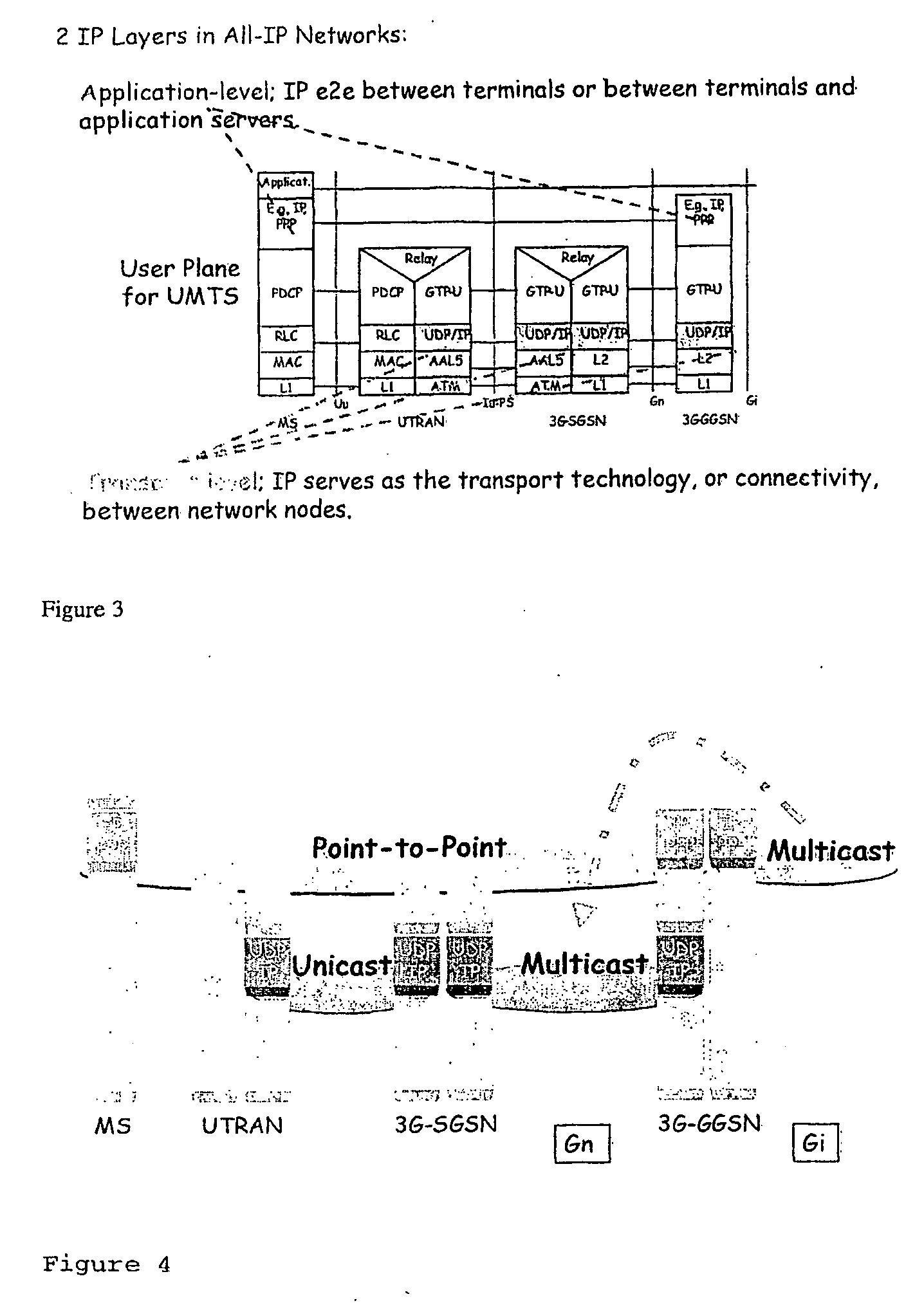Multicast in point-to-point packet-switched oriented networks
a packet-switched oriented network and multicast technology, applied in the field of multicast, can solve the problems of consuming considerable amount of bandwidth, high demands on the network infrastructure, and the ip layer in the ggsn, and achieves the effect of reducing the overall transmission resource, reducing the set-up time of multicast groups, and efficient utilisation of scarce and expensive network resources
- Summary
- Abstract
- Description
- Claims
- Application Information
AI Technical Summary
Benefits of technology
Problems solved by technology
Method used
Image
Examples
Embodiment Construction
is given.
[0060] FIG. 1: Packet-switched domain in a UMTS network and in addition the radio networks and the IP multimedia subsystem,
[0061] FIG. 2: Network related view of the basic idea of the invention,
[0062] FIG. 3: Overview of the protocol stacks used for the UMTS userplane,
[0063] FIG. 4: Protocol related view of the basic idea of the invention,
[0064] FIG. 5: Basic idea of the invention showing the pre-configured transport level multicast group tunnel,
[0065] FIG. 6: Basic idea of the invention showing multiplexing on the pre-configured transport level multicast group tunnel,
[0066] FIG. 7: Data structure for administration for the entries according to the invention,
[0067] FIG. 8: Pre-configured TLMG Establishment procedure,
[0068] FIG. 9: Pre-configured TLMG Release procedure,
[0069] FIG. 10: Multicast Group Registration procedure,
[0070] FIG. 11: Multicast Group De-Registration procedure,
[0071] FIG. 12: PDP Context De-Activation,
[0072] FIG. 13: First alternative for performing the p...
PUM
 Login to View More
Login to View More Abstract
Description
Claims
Application Information
 Login to View More
Login to View More - R&D
- Intellectual Property
- Life Sciences
- Materials
- Tech Scout
- Unparalleled Data Quality
- Higher Quality Content
- 60% Fewer Hallucinations
Browse by: Latest US Patents, China's latest patents, Technical Efficacy Thesaurus, Application Domain, Technology Topic, Popular Technical Reports.
© 2025 PatSnap. All rights reserved.Legal|Privacy policy|Modern Slavery Act Transparency Statement|Sitemap|About US| Contact US: help@patsnap.com



